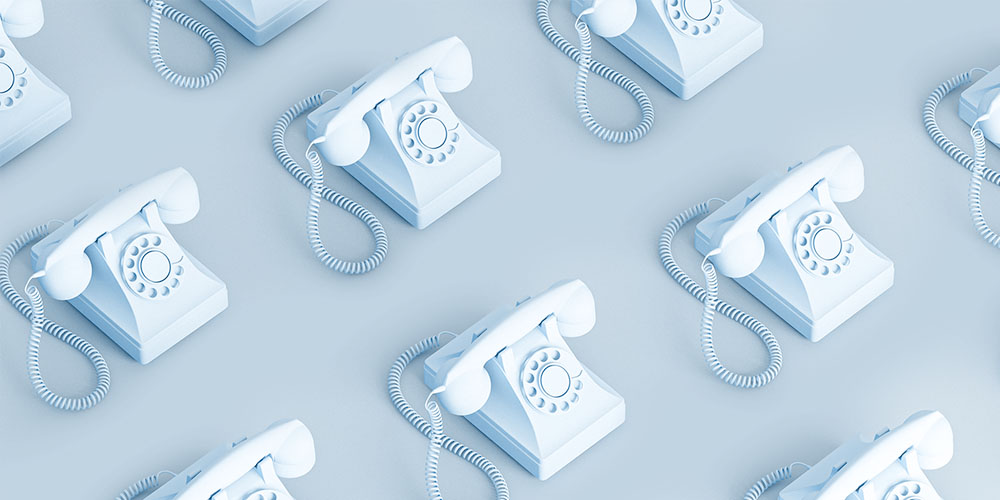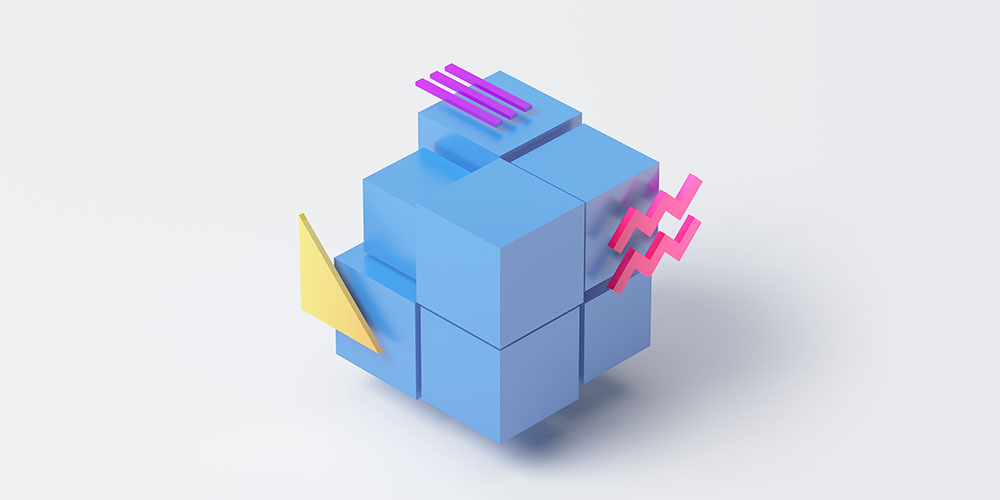Too often, we talk about SaaS with B2B in mind. But what about B2C?
This "marginal category" rarely gets special attention. The B2C SaaS game is so hard that you should think twice about trying: low ARPU, high churn, volatile audience.
Meanwhile, there are ways for B2C to win.
Except people rarely share them.
"I'm used to this," says Stephen Johnson of Topo Maps. "I just read advice for B2B SaaS and find tidbits that could work for us."
The fundamentals of SaaS email strategy do work for B2C SaaS, but there are some peculiarities that can help you get the best ROI on your email marketing efforts. Let's focus on these special strategies in this article.
Special thanks to Samar Owais and James Lamb for doing an expert review of this guide.
What makes B2C SaaS email marketing special?
If you run a B2C product, you can wake up at night and recite your problems:
- Low ARPU
- High volume of users
- High churn
- Seasonal patterns in user acquisition
However, it's not all bad. There are some big advantages:
- Email reader = decision-maker
- Short time to purchase
- Bigger volume of users
- More room for automation and experiments
Stephen Johnson talks about how the volume/ARPU game is radically different:
"I have listened to many interviews where the founder talks about their traffic to their product, and it's not uncommon that their monthly traffic (or free trials) is how many we get in a day, or even in an hour during high season. Then they talk about their ARPU and LTV, and ours will often be 1/10 or even 1/100 of theirs."
B2C SaaS has the highest leverage for email marketing automation, as your automation campaigns are impacting a high number of users — thousands, or tens of thousands per month. You just can't maintain the same level of communication manually.
And ultimately, plenty of things are similar. James Lamb says:
"In the end, it's all H2H (human-to-human). You're still trying to evoke some kind of reaction/response from the recipient: renew, retain, engage, activate, upsell, educate/inform. You're still competing with everything else in their inbox."
16 strategies for B2C SaaS email marketing automation
#1. Create multiple targeted onboarding campaigns
Set up multiple onboarding campaigns tailored for 3-5 key use cases.
It doesn't make sense to do this for a small B2B product, but this effort has great ROI if you're serving thousands of new users every month.
Imagine that your project management tool can be used by designers, writers, or project managers. Then you will have three dedicated segments and custom-written onboarding flows.
Here's what you can do:
- Customize the headlines ("Use X in your next design project")
- Share dedicated content advice for each profile
- Use very specific language for their use case
Sounds great, but how do you get this information? You can ask this question during the signup flow, thus allowing your users to self-segment.
Here's how Loom asks users to self-qualify during their signup process:
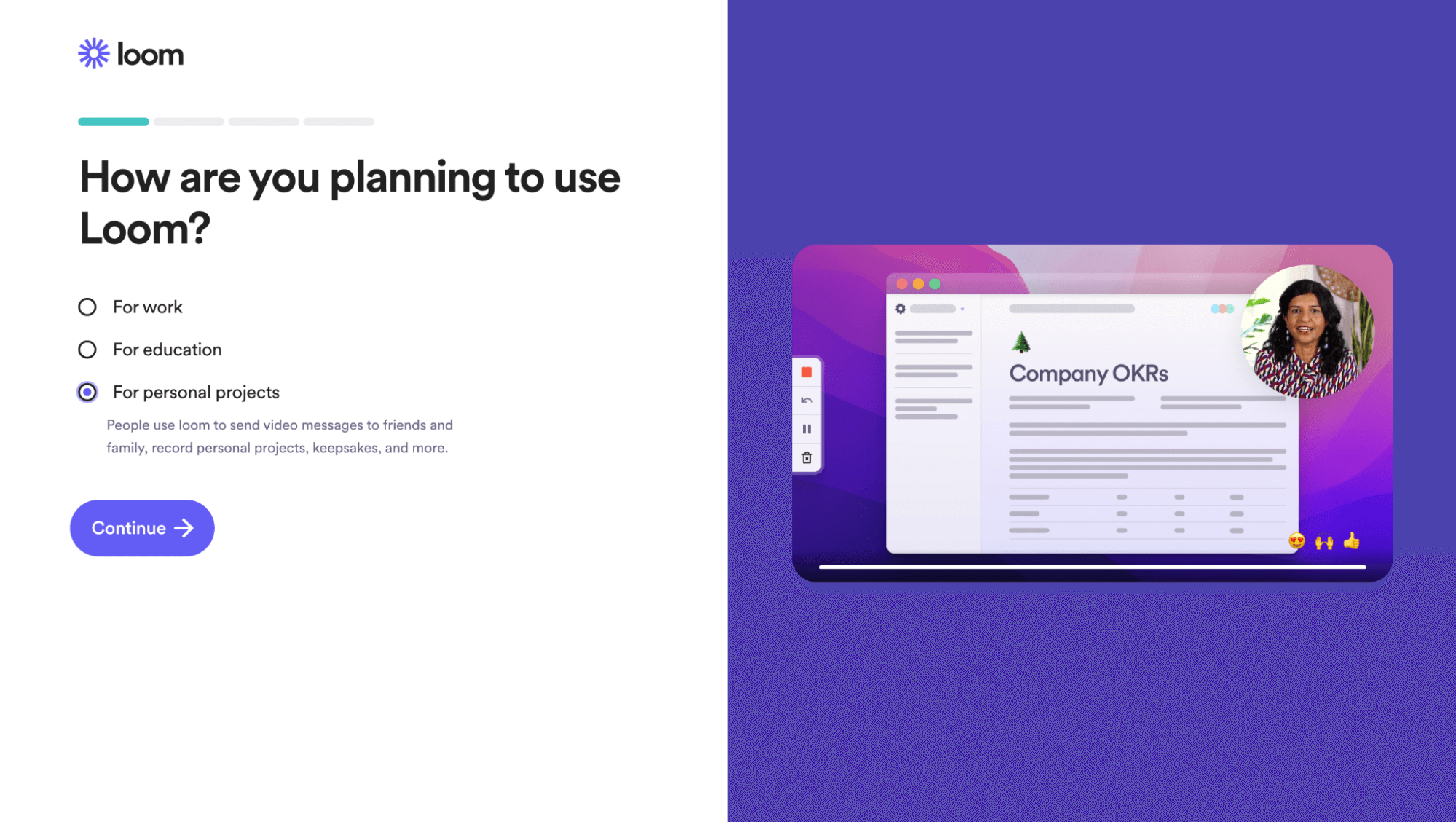
#2. Do behavior-based user onboarding
Since B2C SaaS is a numbers game, you should do your best to make the smartest onboarding possible.
No, a time-based drip campaign doesn't cut it — use behavior-based onboarding instead.
"Behavior-based" doesn't mean "I saw you do X" kind of emails. You can simply skip on irrelevant emails if the user is already using a certain feature. However, this makes a massive difference compared to a hard-coded drip sequence.
Here's how Notion leverages information about user progress in their onboarding emails:
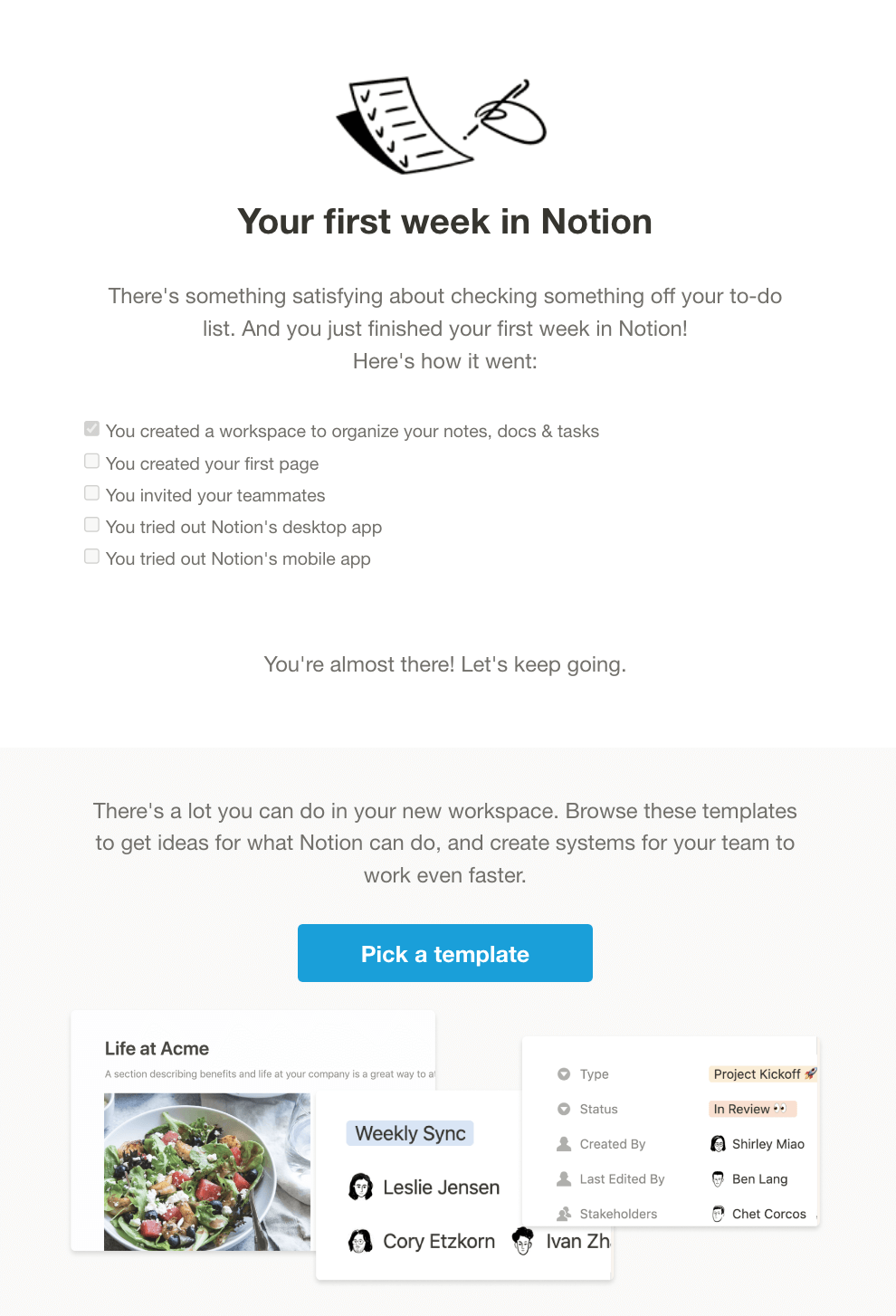
Learn more about behavior-based email in this guide on SaaS email marketing strategy.
#3. Use a signup abandonment campaign
While cart abandonment emails are a privilege of ecommerce, there's no reason why you shouldn't do the same for your B2C SaaS. With a high volume of users, a signup abandonment campaign can bring solid ROI.
Especially if you're asking for their credit card upfront.
To implement this, you'd need the user to enter their email address as the first step in their signup flow. Then you can send 2-3 follow-up emails if they don't complete the process, spaced out 1-2 days apart.
Here are some things you can include in your signup abandonment campaign:
- Testimonials and case studies
- Templates and other ways to highlight convenience (more on that below)
- Promo codes and deals to encourage immediate purchase
- Personal questions like "Why did you choose not to finish your signup?" to trigger engagement
#4. Use a customer loyalty campaign
A customer loyalty campaign is triggered after a user has successfully activated and has spent 1-2 months using your product. It includes various emails, spaced out 2-4 weeks apart:
- Ask for feedback
- Offer free swag or paid branded merchandise
- Ask for testimonials and reviews
- Invite for a referral or affiliate program
Sure, not everyone will follow through on your suggestions but that's how you can find and nurture loyal fans among your audience, at scale.
#5. Use referral programs and affiliate programs
These programs can multiply the viral effect for your product.
How do you engage your customers in such a program? That's where email automation comes in handy. Simply include an invite to your referral program into your "customer loyalty" campaign.
Here's how Notion invites customers to join their affiliate program.
Subject: Join Notion's Affiliate Program to earn $
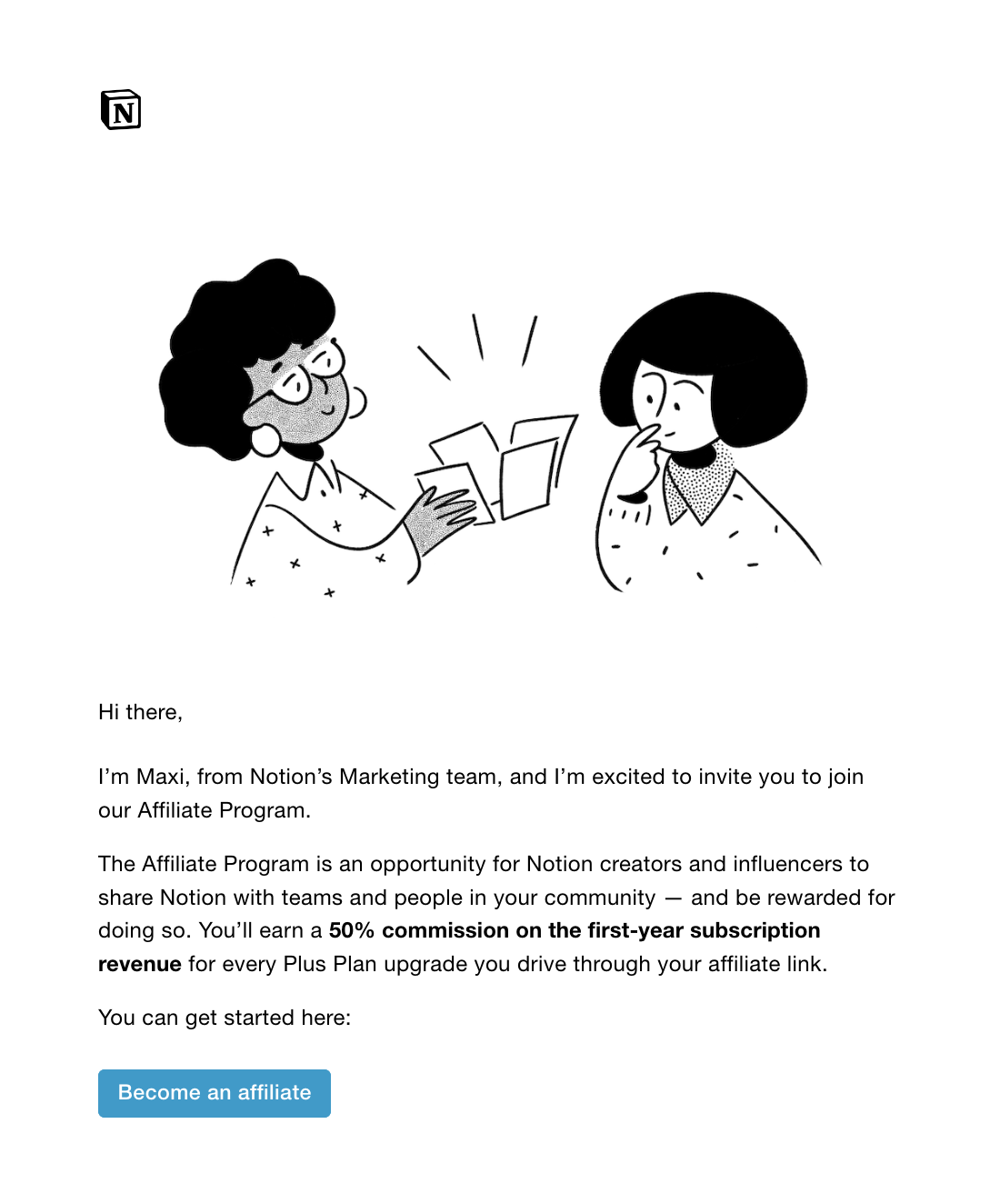
#6. Keep marketing to churned users
When it comes to saving money on email marketing, the key approach is pruning inactive users from your mailing list.
However, it's not always the best approach for B2C. Customers can keep coming back to your tool during the high season.
Stephen Johnson says:
"Our customers will often resubscribe months, or even years, after canceling. When someone cancels, it isn't always that they are done. Often, they just are done for now, and will pay again later. That makes it hard to know when to prune that person out of receiving our marketing emails."
What can you do to address this?
Don't remove churned users entirely, but keep them for marketing emails. You can either keep them in the same tool, or move them to a more affordable, simple tool (like SendGrid or Mailchimp).
While doing that, though, consider the human effort of maintaining two tools. As an ESP, we also see the opposite trend: Userlist customers bringing in their marketing email under the same roof, alongside customer emails. Fewer tools to train teammates for, less brain power to send a newsletter or a product announcement.
For the same seasonal pattern, try offering a parking plan. Allow your users to retain their accounts for a small fee instead of canceling altogether. This advice isn't related to email marketing, but works great for seasonal products.
#7. Offer upgrades to active customers only
An evergreen upgrade campaign is the bread-and-butter for any B2C business. However, the most common mistake is to blast all free users with upgrade emails.
Instead, focus on activation first, and only send upgrade emails to activated users who are already receiving value from your product.
Sending upgrade emails to irrelevant users can actually have a negative impact on your brand. Claudiu Murariu shares such a story from his experience:
"The team looked at the granular data, and they found that some campaigns had a negative impact on users! The campaigns that were having a negative impact were very aggressive. They were trying to get people to upgrade even before they finished the onboarding process."
#8. Think about groups/families/teams
B2C doesn't always mean solo users. There are occasions when your product can be used by groups, often collaboratively:
- Families and friends
- Sports, hobbies, travel, etc.
- Actual teams at work (yes, the difference between B2B and B2C is blurry)
A bright example of this is Spotify. Here's an email promoting their Family Plan.
Subject: 6 accounts, 3 months free, 1 Spotify Premium Family
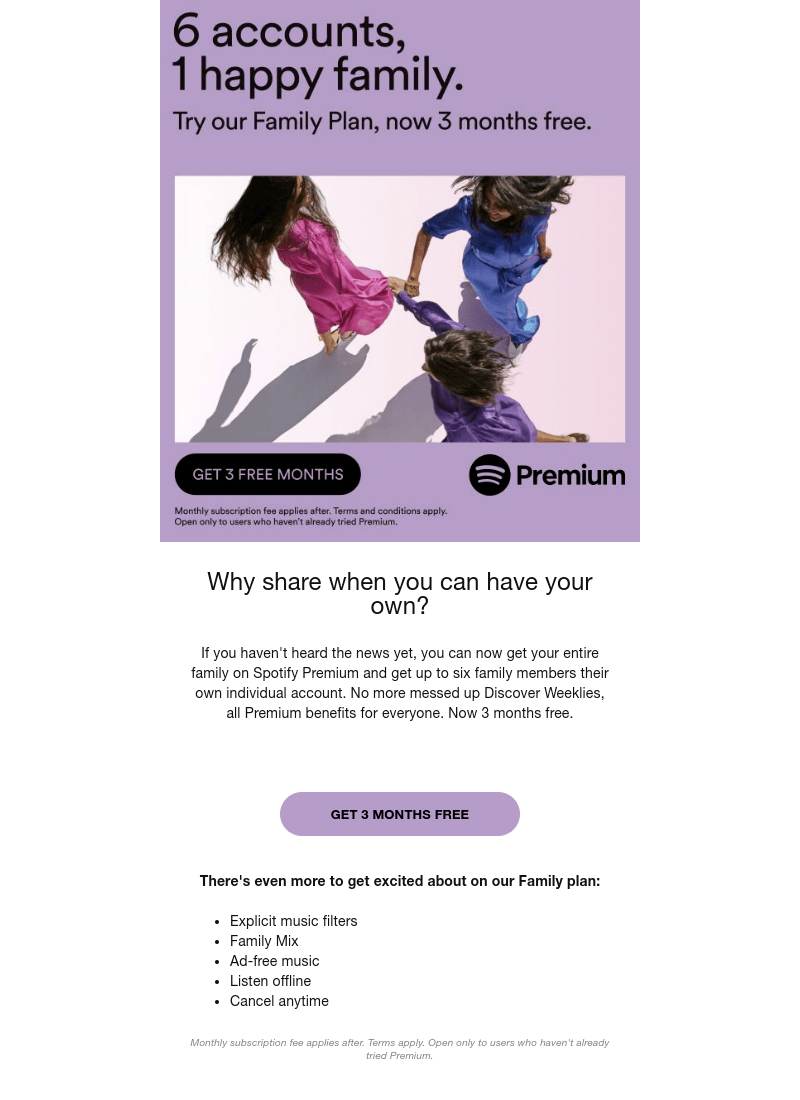
#9. Run seasonal sales (with caution)
Running a sale to your marketing email list is a very popular conversion method. In fact, that's the only thing many companies do.
Discounts can bring good results, but they can also backfire in high costs and low-quality customers.
You need to answer these questions:
- How does natural demand for your product fluctuate during the year?
- Do your ideal customers and "less than ideal" customers have the same seasonality?
- Would your potential customers buy your product anyways, regardless of the discount?
- Will a discount attract customers, or could it repel them?
Stephen Johnson shares their learnings from seasonal sales:
"We did an experiment with Black Friday, and we found that sales were the same with or without a sale. That said, there is a natural demand for our product during that time, as a lot of people go out hiking and snowshoeing that weekend. So we found that it was a bad weekend to run a sale, since a lot of people were going to buy either way. When we ran sales during our off- season, we then had some success. But ultimately, customers that buy without a sale during our off-season are much more likely to be a high-value long-term customer. These are dedicated professional travelers who plan their trips upfront."
What's the best way to figure out if seasonal sales work for your B2C SaaS?
Just give it a try.Here's how Wistia runs their end-of-year promotion:
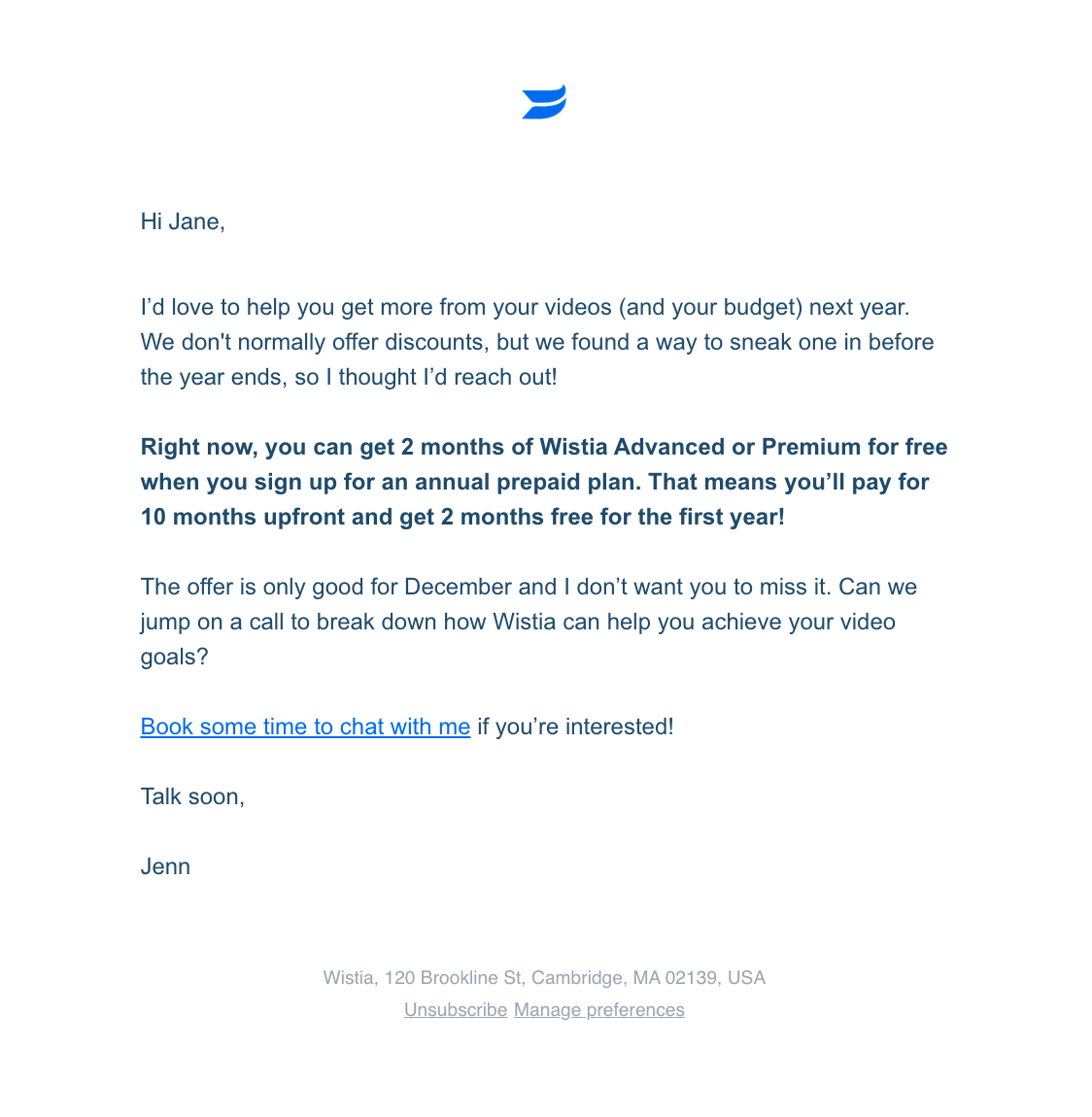
#10. Put your discounts on autopilot
Your discounts can also run on autopilot instead of being seasonal. For example, you can offer a discount in your onboarding campaign to encourage activation.
Here's how Squarespace includes a discount in their onboarding flow. They also follow up two days later with another email to employ a sense of urgency.
Subject: Get 20% off your next website subscription
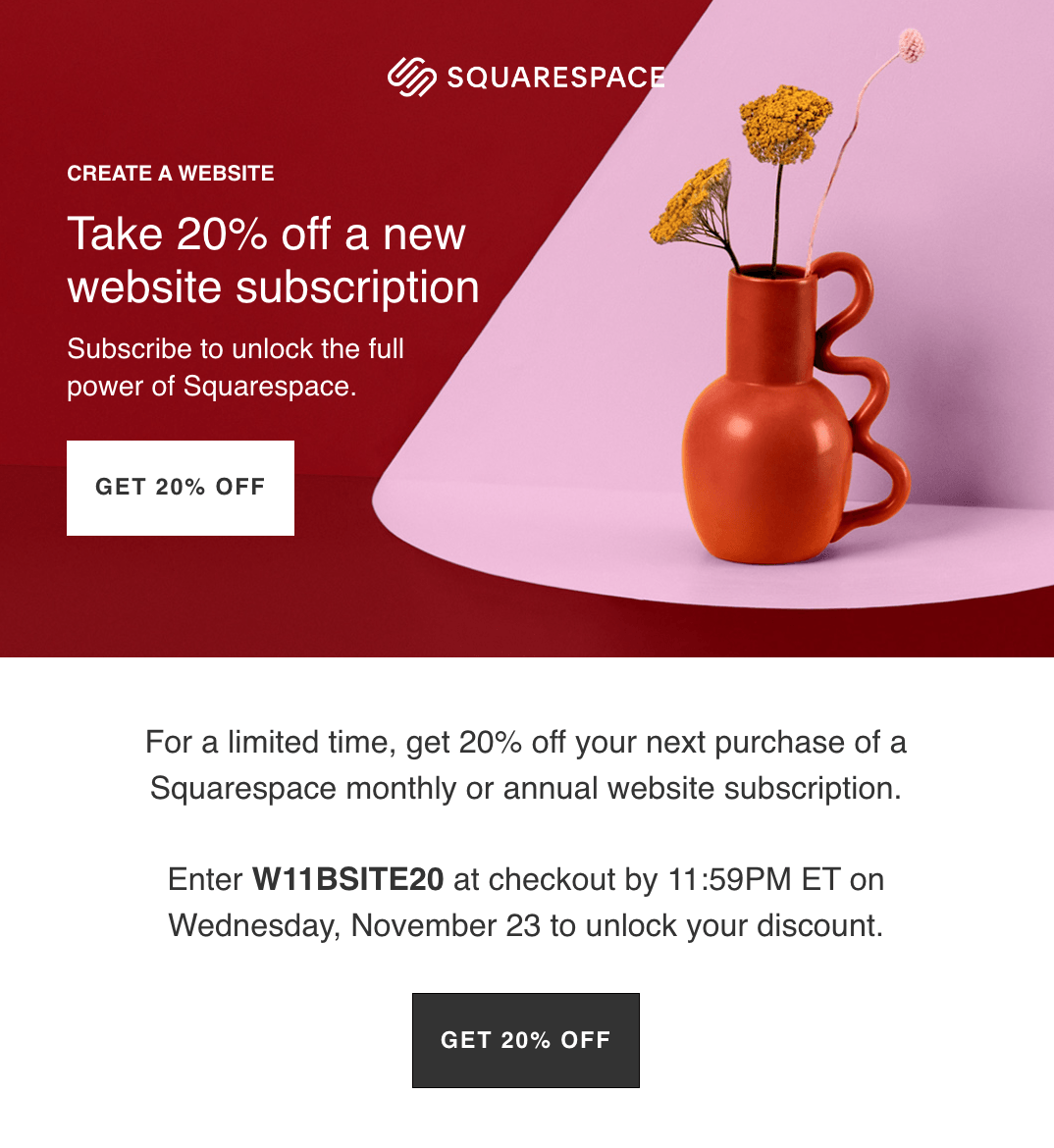
#11. Be cautious with lifetime deals
Should you offer lifetime deals?
For some B2C companies, it can boost conversions. For other companies, lifetime deals are a kiss of death.
You may arrive at these negative consequences:
- Unqualified customers
- Too much support
- High technical costs stretched out for years, without incoming revenue to support them
We recommend lifetime deals if your product requires little support, doesn't come with significant technical costs, and has high potential for virality. Lifetime deals can also be offered early in the product's lifecycle, for cashflow and validation reasons.
Stephen shares a story when a lifetime deal made sense for Topo Maps:
"We did exactly one lifetime deal, and it had a very specific purpose. The purpose was to raise enough cash that I could go full time. So I viewed that deal as me borrowing from customers by having them pay cash upfront. Then I would later pay their costs of using the app. It was worth it for that specific case."
#12. Make an emotional connection
Great news is, B2C SaaS has less friction and a higher chance of an impulse purchase — which rarely happens in B2B SaaS.
Which means that you can appeal to human emotions in your email marketing funnel:
- Leverage testimonials and case studies
- Build an emotional connection using brand language and visuals
- Put more effort into your lead nurturing campaign
- Deliver inspirational content like podcast episodes or weekly newsletters (this also builds trust)
- Share stories about the company/founders/team that promote your brand values
For more advice, we recommend resources by Talia Wolf of Getuplift — she's the ultimate queen of emotional marketing.
The language learning app Duolingo is following this advice verbatim.
Subject line: You made Duo sad 😢
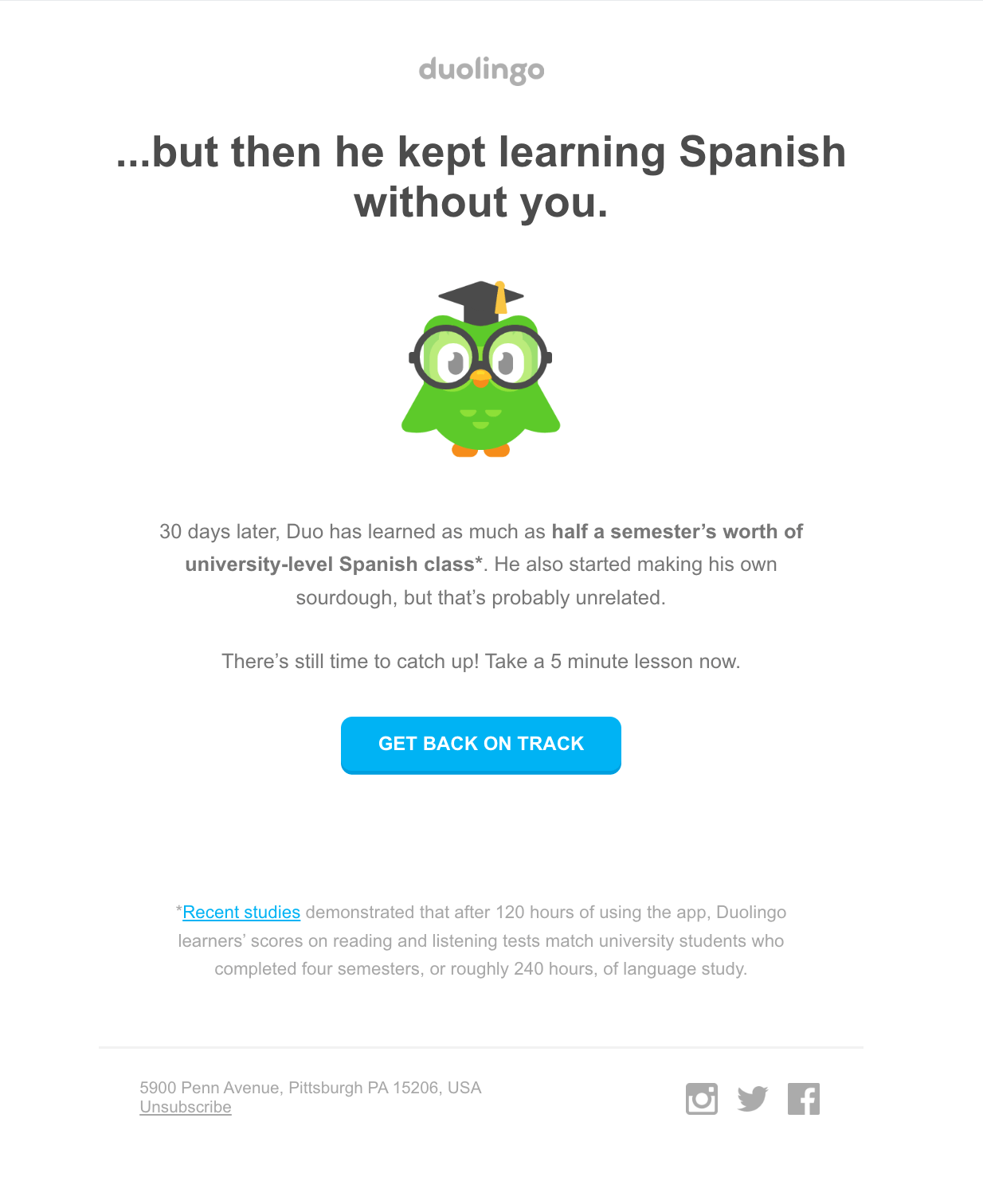
#13. Promote templates and presets
"Easy to get started" can be your competitive advantage. This means templates, presets, and other shortcuts that make the user's life easier.
Here's how Pitch showcases their templates.
Subject line: Which template will you choose?
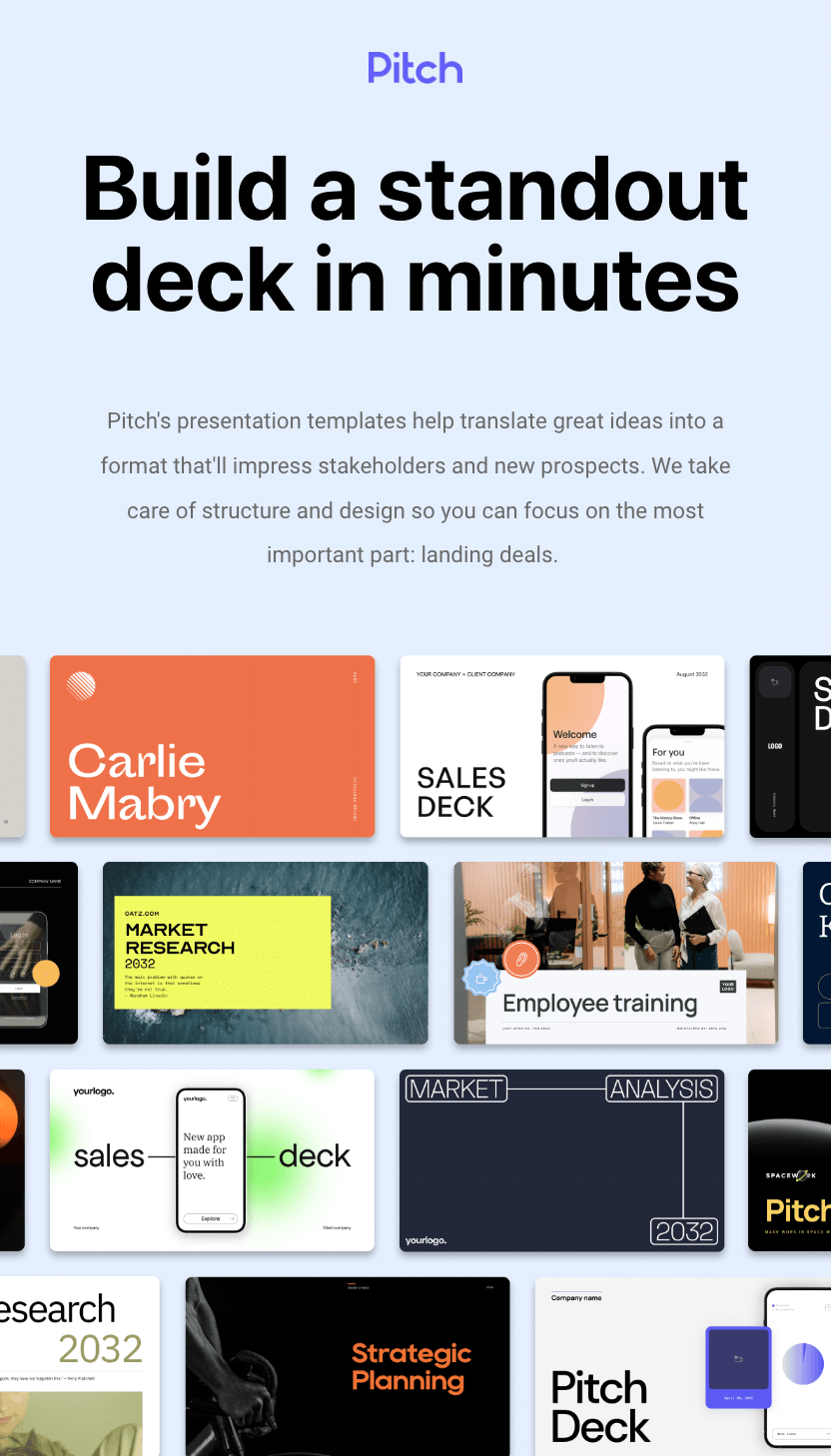
#14. Write using "voice of the customer"
Remember that your customers are often amateurs or newbies, not experts. Sometimes we know too much about the product, and can't speak their language.
Email conversion strategist Samar Owais highlights the importance of using the voice of the customer:
"This is a long-term strategy that pays off in a big way. Writing emails using the language (words, phrases, tone) of our customers helps us connect with them emotionally, builds brand loyalty, and increases conversions."
How do you find the right words?
User interviews can help you source specific phrases and ideas. If you don't have enough time, you can also mine support tickets, forums or review websites.
This workshop recap with Ferdinand Goetzen expands in detail on voice-of-the-customer research.
#15. Be strategic with "prosumers"
The line between B2B and B2C is blurry. For example, "prosumers" are individual customers who belong to both camps at the same time.
Here's how Baird Hall of Zubtitle defines this category and its challenges:
"There is a third 'prosumer' category in-between the two. These are usually individual purchasers that are buying for a specific project for their job, side-project, or small business. Converting a high volume of new prosumer customers is a communication challenge you need to solve."
You can't provide high-touch onboarding to all prosumer trials, but they still need more help than an average B2C customer. Self-serve principles work best for such user onboarding.
#16. Tell stories
Relatable stories have a huge impact on the reader, and they make perfect email content. However, a good story isn't as easy to write.
The key here is to borrow stories from life. You can't really invent a story sitting at your desk — they will come from support tickets, customer interviews, and hands-on industry work.
Stephen Johnson shares how they create stories:
"We heavily use our own product. When we get back from a backpacking trip, we talk about what happened on the trip, and how we can turn it into a good story with something our users can learn from. These stories teach great principles about being in the backcountry, but they don't directly sell our product — and we are ok with that. They don't even make us look good — many of them honestly describe the mistakes I have made."
#17. Be personal, at scale
Let's be honest, the founder of a big B2C company can't send every welcome email personally. Users also know that.
But you can still engage them at scale and remain personal. There's still a place for emails "sent from the founder" and the likes.
Sender profiles make this very easy with Userlist, and you can use a Gmail-like theme for an authentic look.
Here's an example from Feedly that is both honest and sweet. For the context, they send this email on the second day, after their first official greeting.
Subject line: A quick hello
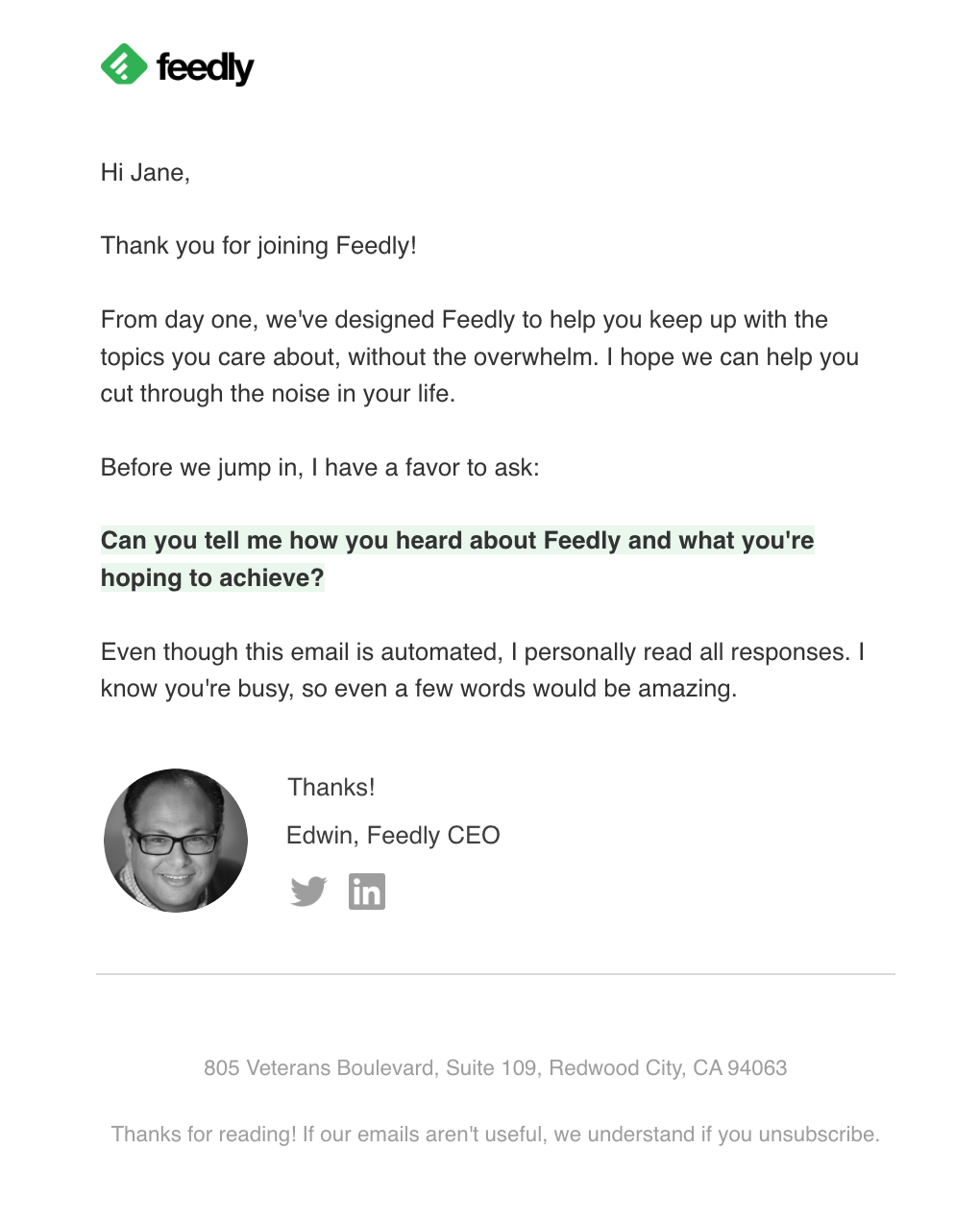
Summing up
Email marketing is an essential instrument for a B2C SaaS, and you shouldn't neglect it. A simple onboarding campaign goes a long way.
Here are other articles that can be helpful for B2C SaaS email marketing:
- SaaS Email Marketing Strategy: Everything You Need to Know
- How to Save Money on High Volume Email: 10+ Ethical Tactics for SaaS Companies
- 20+ Trial Expiration Emails: How Other SaaS Companies Are Converting Users (Free Email Templates Included)
- What SaaS Email Marketers Can Learn From Coaching & Ecommerce
If you need a bit more guidance, welcome to book a free strategy call with us. No strings attached.
— Regards, Jane.


